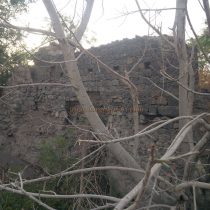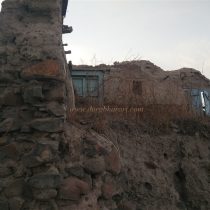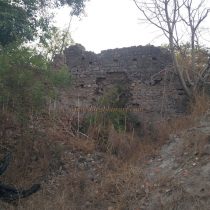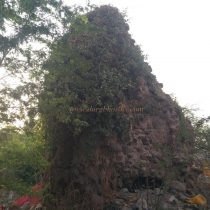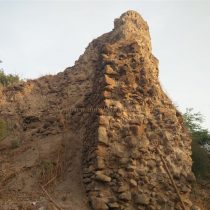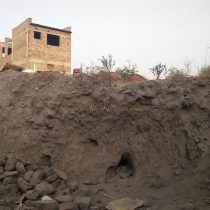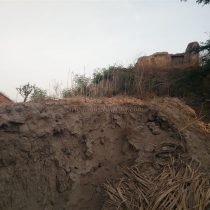MALANGAON
TYPE : GADHI
DISTRICT : SANGALI
HEIGHT : 0
GRADE : EASY
There are three main types of forts: Hillfort, Ground fort, and Water fort. Even if these hill forts were built on the edges of the Sahyadri, it won’t be that difficult to get there as compared to the sea forts, due to this reason at least some of the remains of the sea forts can be seen. But the ground fort is unfortunate about this. Due to its easy access, it has encroached upon it many times. One of these Ground forts is Malegaon Ground fort in Nashik. Malegaon is a taluka village 108 km from Nashik city in the Nashik district. Mumbai-Agra National Highway No. 3 passes through Malegaon. Malegaon's Ground fort is situated on the banks of the river Mosam, which is associated with medieval history. As this fort is in Malegaon itself, you should not face any problems to go there.
...
According to the records of Grant Duff, who wrote the history of the Marathas, the fort was built by Naroshankar in 1740, while another reference in 1820 mentions that the fort was built sixty years ago, i.e. in 1760. Since Naroshankar was influenced by forts in North India, he brought some artisans from North India to build this fort. The fort is spread over five acres with strong square shaped double ramparts. The ramparts of the fort have 9 bastions and one of these bastions is situated on the river banks. The outer wall of the fort is 20 feet high and the inner wall is 35 feet high. The outer ramparts are built at a distance of about 50 feet from the inner ramparts of the fort. For the protection of the fort, there was a wide and deep moat outside the ramparts, and arrangements were made to build a wall on the river Mosam to prevent water from entering the fort’s moat. At present, the moat is left only on the side of the door and is filled with soil and garbage, while on the other side, the moat has been extinguished with soil and huts have been built on it. The north-facing gate of the fort on the outer ramparts has been demolished and is connected to the fort by a bridge over a moat. Upon entering through the gate, there is a collapsed rampart of the main fort in front and an iron gate. From here you enter the fort. Before entering the main fort, first look at the grandeur of the fort by walking through the inner and outer ramparts from the right or left. It is said that there was a horse's stable over here. There are steps in the corner and at the door to climb the outer ramparts of the fort. The outer ramparts and doors are visible from 3 places, but they are now closed. Upon entering through the iron gate, there is Kakani school in the front, so you have to enter the fort only with permission. This ground fort is also cleaned as the school premises are cleaned regularly. Therefore, most of the structures on this Ground fort still exist. There is an oil painting of Naroshankar on the wall outside the school office. A total of five cannons of sizes 1 small, 2 medium and 2 large, are kept in the school premises. Initially, walk from outside the school through the wide path between the fort wall and the building. There is a deep well at the back of the school. Go up the steps to the side of the well and have a look at the ramparts, bastions, charya, the barns in the walls, stone stairs built inside the walls, and come back to the entrance. Going further to the left side of the entrance, there is a large barn in the ramparts and a large arch on the left-hand side. Upon entering through this arch, you can see the first wooden door with the wicket door of the Rangmahal in front. A large number of carvings can be seen in this Rangmahal. There are stone steps to go upstairs but the road is closed. The remnants of the second door of the Rangmahal are the carved wooden frames although there are many other carvings on this door too. On both sides of this door, the upper part is decorated with carvings and at the top, there are two beautifully built bastions. The stone of this beautifully carved bastion, which shows the imprint of North Indian architecture on the fort, is crumbling. This was the main entrance to the fort and the road is closed with a stone wall in front of it. Walking around the fort, you can see Rangmahal, magnificent wooden gates, stone staircases leading to the ramparts, stone bastions, ramparts, rooms, arches, basement doors, and cannons of various sizes. It takes two hours to see the entire fort but you will be satisfied that you saw the fort perfectly. Mahuligram, which has historical and religious background, is now known as Malegaon. The Rashtrakuta dynasty ruled this place in 1000. In 1730, Naroshankar of the Dani family of Saswad in Pune district was in the army of Malharrao Holkar in North India for a long time as a Chief. Naroshankar, who had a soldier with Udoji Pawar, later became the Subhedar of Indore. He conquered Orchha and Jhansi on behalf of the Peshwas. He lived in Jhansi for 14 years. The then Mughal emperor II Alamgir went hunting and was attacked by a lion. Naroshankar risked his life to save the emperor by killing the lion. The emperor praised Naroshankar and gave him the title 'Rao Bahadur' and gave him the Nimbayat village of the Malegaon area and appointed him as the chief of seven-eight villages. Later, the Peshwas summoned Naroshankar to Maharashtra. Naroshankar obtained permission from the Peshwa to build a mansion at Malegaon, which was one of the eight villages he had received as a reward from the emperor of Delhi in 1757. The site on the banks of the river Mosam was chosen for building this fort, but Naroshankar did not just build a fortress but built a magnificent Ground fort. The Peshwas did not like this but Naroshankar succeeded in bridging the gap with the Peshwa. Naroshankar lived in this fort till his death. The construction of this fort is so strong that in 1818 even the British had to fight to conquer this fort. On 16 May 1818, Lieutenant McDowell marched on the fort with 1300 soldiers and 250 gunmen to capture the fort on behalf of the British. At that time there were few Arab militants in the fort. The British tried a lot but could not succeed. In this war, 35 British people were killed and 175 were injured. Unable to fight, the British resorted to manipulation. Due to a fire in the ammunition depot, the army inside the fort unwillingly handed over the fort to the British on 13 June 1818. Ground fort, which once preserved the cultural and historical identity of Malegaon, has gone into obscurity today. Both the walls on the moat surround the fort and it is a challenge to preserve this ancient structure.
© Suresh Nimbalkar

